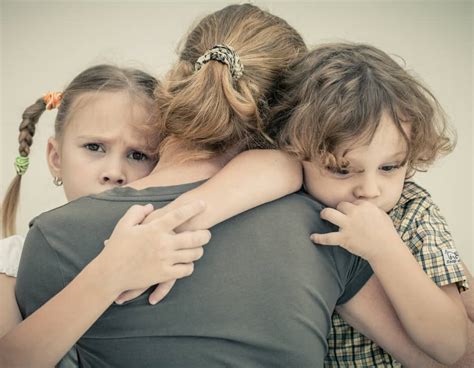Protecting the Kids During an In-Home Separation
In-home separations are incredibly challenging, especially when children are involved. The stress of the adult relationship breakdown can significantly impact a child's emotional well-being and development. Navigating this delicate situation requires careful planning and a commitment to prioritizing the children's needs above all else. This article provides guidance on protecting your children during an in-home separation, offering practical advice and addressing common concerns.
How Can I Minimize the Impact on My Children During an In-Home Separation?
Minimizing the impact on children during an in-home separation requires a proactive and sensitive approach. Avoid airing grievances or engaging in arguments in front of them. Children are highly perceptive and absorb the emotional atmosphere of their home. Creating a calm and predictable environment, as much as possible, is crucial. This may involve establishing clear routines, maintaining consistent discipline, and providing ample opportunities for them to express their feelings in a safe and supportive space. Open communication, even if difficult, is key to helping children understand the situation and feel heard.
What are Some Strategies for Co-Parenting While Living Together During a Separation?
Co-parenting during an in-home separation requires exceptional maturity and cooperation. Establishing clear boundaries and communication protocols is paramount. This could involve creating a shared parenting schedule, agreeing on disciplinary approaches, and establishing clear zones of responsibility within the home. Consider utilizing a communication app specifically designed for co-parents to schedule, share information, and resolve conflicts without directly interacting. Seeking professional mediation can help facilitate these agreements and provide a neutral space for discussion.
How Do I Ensure My Children's Physical Safety During an In-Home Separation?
Ensuring physical safety during an in-home separation is a top priority. If there's any concern about domestic violence or abuse, immediate action is necessary. Contact the relevant authorities and seek support from domestic violence shelters or support groups. Even without overt violence, establishing clear physical boundaries within the home, such as designated spaces for each parent, can minimize potential conflict and enhance safety. Regular check-ins with trusted family members or friends can also offer an additional layer of security and support.
How Can I Help My Children Cope Emotionally with the Separation?
Children often experience a wide range of emotions during their parents' separation, including sadness, anger, confusion, and anxiety. Providing emotional support is critical. This involves actively listening to their concerns, validating their feelings, and assuring them that they are loved and safe. Consider seeking professional help from a child psychologist or therapist who specializes in family separation. Therapeutic interventions, such as play therapy or family counseling, can provide a safe space for children to process their emotions and develop healthy coping mechanisms.
What are the Legal Considerations for In-Home Separations?
The legal considerations of in-home separations vary depending on location and specific circumstances. Consulting with a family law attorney is crucial to understand your rights and responsibilities. This includes establishing temporary custody arrangements, addressing child support, and planning for eventual relocation or separate living arrangements. A legal professional can guide you through the process and ensure that the children's best interests are protected throughout the separation.
Are there Resources Available to Help Families Going Through In-Home Separations?
Numerous resources are available to support families navigating in-home separations. These include family counseling services, support groups for separated parents, and legal aid organizations. Online resources and helplines can also offer valuable information and guidance. Reaching out to your family doctor or local community center can help connect you with the necessary support services.
Conclusion: Prioritizing Children's Well-being
In-home separations are undeniably challenging, but by prioritizing children's well-being and proactively addressing the emotional, physical, and legal aspects, you can help them navigate this difficult period with greater resilience and stability. Remember, seeking professional help is a sign of strength, not weakness. Prioritizing open communication, establishing clear boundaries, and consistently focusing on the needs of your children will significantly contribute to a smoother and healthier transition for everyone involved.

